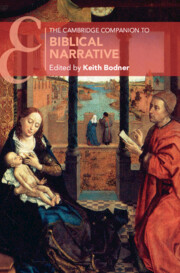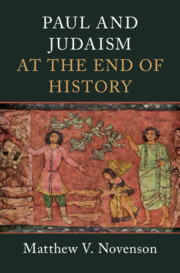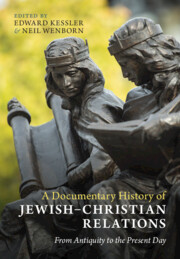Refine search
Actions for selected content:
156 results

Veiling in the Late Antique World
-
- Published online:
- 26 November 2025
- Print publication:
- 18 December 2025
7 - Comparisons (2)
- from Part III - Relationship to Other Early Christian Literature
-
- Book:
- The Gospel of Truth
- Published online:
- 23 October 2025
- Print publication:
- 06 November 2025, pp 165-198
-
- Chapter
- Export citation
3 - Literary Formation
- from Part I - First Principles: What Is a Gospel, According to Origen?
-
- Book:
- The Life of Jesus in the Writings of Origen of Alexandria
- Published online:
- 26 September 2025
- Print publication:
- 16 October 2025, pp 38-62
-
- Chapter
- Export citation
5 - Juristic Reasoning, Citational Practices, and Law at the End of an Empire
- from Part II - Law without Order
-
- Book:
- The God and the Bureaucrat
- Published online:
- 17 July 2025
- Print publication:
- 31 July 2025, pp 183-216
-
- Chapter
- Export citation
Transforming Mortality: Paul’s Linguistic Expressions and Thought Development from 1 Cor 12:13 to 2 Cor 4:7–12
-
- Journal:
- Harvard Theological Review / Volume 118 / Issue 2 / April 2025
- Published online by Cambridge University Press:
- 30 July 2025, pp. 222-241
- Print publication:
- April 2025
-
- Article
- Export citation
5 - Postpositivist Views on Scientific Progress and Rationality
- from Part I - Background and Basic Concepts
-
- Book:
- An Introduction to the Philosophy of Science
- Published online:
- 29 March 2025
- Print publication:
- 27 March 2025, pp 51-92
-
- Chapter
- Export citation
15 - Stories from Letters
-
-
- Book:
- The Cambridge Companion to Biblical Narrative
- Published online:
- 30 January 2025
- Print publication:
- 06 February 2025, pp 292-307
-
- Chapter
- Export citation

The Cambridge Companion to Biblical Narrative
-
- Published online:
- 30 January 2025
- Print publication:
- 06 February 2025
Eἴ πως and Paul’s Hope for Death before the Parousia (Phil 3.11)
-
- Journal:
- New Testament Studies / Volume 71 / Issue 1 / January 2025
- Published online by Cambridge University Press:
- 07 August 2025, pp. 1-11
- Print publication:
- January 2025
-
- Article
-
- You have access
- Open access
- HTML
- Export citation
Transcending Epistolary Communication: Prayer in First Thessalonians
-
- Journal:
- New Testament Studies / Volume 71 / Issue 1 / January 2025
- Published online by Cambridge University Press:
- 07 August 2025, pp. 105-118
- Print publication:
- January 2025
-
- Article
-
- You have access
- Open access
- HTML
- Export citation
5 - The Risen Jesus
- from Part I - Origins
-
-
- Book:
- The New Cambridge Companion to Jesus
- Published online:
- 15 November 2024
- Print publication:
- 05 December 2024, pp 72-87
-
- Chapter
- Export citation
4 - Paul’s Jesus as the Christ
- from Part I - Origins
-
-
- Book:
- The New Cambridge Companion to Jesus
- Published online:
- 15 November 2024
- Print publication:
- 05 December 2024, pp 58-71
-
- Chapter
- Export citation
Chapter Three - Contentious Cut
-
- Book:
- Law and Jewish Difference
- Published online:
- 14 November 2024
- Print publication:
- 21 November 2024, pp 87-119
-
- Chapter
- Export citation
Knowledge bloats, love builds: Paul on how we are (not) to know things
-
- Journal:
- Scottish Journal of Theology / Volume 78 / Issue 1 / February 2025
- Published online by Cambridge University Press:
- 15 November 2024, pp. 1-11
- Print publication:
- February 2025
-
- Article
- Export citation

Paul and Judaism at the End of History
-
- Published online:
- 23 October 2024
- Print publication:
- 10 October 2024
2 - Eastern and Western Writings up to the Ninth Century
- from Part I - To 900 ce
-
-
- Book:
- A Documentary History of Jewish–Christian Relations
- Published online:
- 03 October 2024
- Print publication:
- 17 October 2024, pp 65-112
-
- Chapter
- Export citation
1 - The New Testament
- from Part I - To 900 ce
-
-
- Book:
- A Documentary History of Jewish–Christian Relations
- Published online:
- 03 October 2024
- Print publication:
- 17 October 2024, pp 17-64
-
- Chapter
- Export citation

A Documentary History of Jewish–Christian Relations
- From Antiquity to the Present Day
-
- Published online:
- 03 October 2024
- Print publication:
- 17 October 2024
Authority Over Whose Head? Did Paul Instruct Wives or All Women to Cover Their Heads (1 Corinthians 11:2–16)?
-
- Journal:
- Harvard Theological Review / Volume 117 / Issue 4 / October 2024
- Published online by Cambridge University Press:
- 31 December 2024, pp. 699-719
- Print publication:
- October 2024
-
- Article
-
- You have access
- Open access
- HTML
- Export citation
This Hand is Validation: Philemon as a Pauline Holograph
-
- Journal:
- New Testament Studies / Volume 70 / Issue 3 / July 2024
- Published online by Cambridge University Press:
- 30 September 2024, pp. 324-339
- Print publication:
- July 2024
-
- Article
- Export citation
